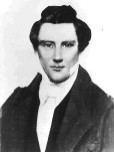
FAIR is a non-profit organization dedicated to providing well-documented answers to criticisms of the doctrine, practice, and history of The Church of Jesus Christ of Latter-day Saints.
m (→Response) |
m (→Response) |
||
| Linha 15: | Linha 15: | ||
::While this thought passed through the speaker's mind, Joseph, as if he read his thoughts, looked up and explained that the Lord gave him the Urim and Thummim when he was inexperienced in the Spirit of inspiration. But now he had advanced so far that he understood the operations of that Spirit and did not need the assistance of that instrument.{{ref|prattuandt}} | ::While this thought passed through the speaker's mind, Joseph, as if he read his thoughts, looked up and explained that the Lord gave him the Urim and Thummim when he was inexperienced in the Spirit of inspiration. But now he had advanced so far that he understood the operations of that Spirit and did not need the assistance of that instrument.{{ref|prattuandt}} | ||
===Biblical parallels=== | |||
The idea of sacred stones acting as revelators to believers is present in the Bible, and Joseph Smith embraced a decidedly "non-magical" and "pro-religious" view of them: | |||
:In Revelation, John incorporates past religious symbols into his message. Thus the most internally consistent interpretation of the "white stone" combines with the book's assurance that the faithful will become "kings and priests" to the Most High (Rev. 1:6). These eternal priests will be in tune with God's will, like the High Priest with the breastplate of shining stones and the Urim. In Hebrew that term means "light," corresponding to the "white" stone of John's Revelation. This correlation should be obvious, but Joseph Smith is virtually alone in confidence that John sees the redeemed as full High Priests: "Then the white stone mentioned in Rev. 2:17 is the Urim and Thummim, whereby all things pertaining to a higher order of kingdoms, even all kingdoms, will be made know." As for genuine religion, Joseph Smith perceived the stone of John's vision not as a stone of chance but as a conduit of enlightenment and a reward of worthiness of character.{{ref|revelationjohn1}} | |||
==Conclusion== | ==Conclusion== | ||
| FAIRwiki portal |
| Joseph Smith, Jr. |

|
| FAIRwiki articles |
|---|
|
|
|
|
| FAIR Wiki Topical Guide |
| FAIR web site |
| FARMS web site |
|
| Additional reading |
| Other portals |
This article is a draft. FAIRwiki editors are currently editing it. We welcome your suggestions on improving the content.
A brief explanation of the criticism.
The Urim and Thummim were the means of receiving most of the formal revelations until June 1829. That was the time of completing the Book of Mormon, which was translated through the Urim and Thummim and also the seer stone. But no type of stone is involved in receiving revelation or translation after that. Orson Pratt watched the New Testament revision and wondered why the Book of Mormon procedure was not continued:
The idea of sacred stones acting as revelators to believers is present in the Bible, and Joseph Smith embraced a decidedly "non-magical" and "pro-religious" view of them:
A summary of the argument against the criticism.
| "Magic" wiki articles |

FAIR is a non-profit organization dedicated to providing well-documented answers to criticisms of the doctrine, practice, and history of The Church of Jesus Christ of Latter-day Saints.
We are a volunteer organization. We invite you to give back.
Donate Now